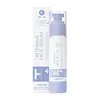What's inside
What's inside
 Key Ingredients
Key Ingredients

 Benefits
Benefits

 Concerns
Concerns

 Ingredients Side-by-side
Ingredients Side-by-side

Water
Skin ConditioningGlycerin
HumectantDimethicone
EmollientPropanediol
SolventCoco-Caprylate/Caprate
EmollientPolysilicone-11
Aloe Barbadensis Leaf Juice
Skin ConditioningArgania Spinosa Kernel Oil
EmollientNiacinamide
SmoothingButylene Glycol
HumectantDicaprylyl Carbonate
EmollientBoswellia Serrata Extract
Skin ConditioningCamellia Sinensis Leaf Extract
AntimicrobialAspalathus Linearis Leaf Extract
Skin ConditioningHoney Extract
HumectantTetrapeptide-14
Skin ConditioningPalmitoyl Tripeptide-38
Skin ConditioningSodium Hyaluronate
HumectantHydrolyzed Hyaluronic Acid
HumectantTocopherol
AntioxidantHydroxypropyl Cyclodextrin
MaskingGlyceryl Caprylate
EmollientCaprylyl Glycol
EmollientSodium Phosphate
BufferingSaccharide Isomerate
HumectantAcrylates/C10-30 Alkyl Acrylate Crosspolymer
Emulsion StabilisingTapioca Starch
Caprylhydroxamic Acid
Polymethylsilsesquioxane
Sorbitan Stearate
EmulsifyingDecyl Glucoside
CleansingGlycine Soja Oil
EmollientSodium Hydroxide
BufferingDisodium Phosphate
BufferingDisodium EDTA
1,2-Hexanediol
Skin ConditioningHydroxyacetophenone
AntioxidantXanthan Gum
EmulsifyingCitric Acid
BufferingPotassium Sorbate
PreservativeSodium Benzoate
MaskingEthylhexylglycerin
Skin ConditioningWater, Glycerin, Dimethicone, Propanediol, Coco-Caprylate/Caprate, Polysilicone-11, Aloe Barbadensis Leaf Juice, Argania Spinosa Kernel Oil, Niacinamide, Butylene Glycol, Dicaprylyl Carbonate, Boswellia Serrata Extract, Camellia Sinensis Leaf Extract, Aspalathus Linearis Leaf Extract, Honey Extract, Tetrapeptide-14, Palmitoyl Tripeptide-38, Sodium Hyaluronate, Hydrolyzed Hyaluronic Acid, Tocopherol, Hydroxypropyl Cyclodextrin, Glyceryl Caprylate, Caprylyl Glycol, Sodium Phosphate, Saccharide Isomerate, Acrylates/C10-30 Alkyl Acrylate Crosspolymer, Tapioca Starch, Caprylhydroxamic Acid, Polymethylsilsesquioxane, Sorbitan Stearate, Decyl Glucoside, Glycine Soja Oil, Sodium Hydroxide, Disodium Phosphate, Disodium EDTA, 1,2-Hexanediol, Hydroxyacetophenone, Xanthan Gum, Citric Acid, Potassium Sorbate, Sodium Benzoate, Ethylhexylglycerin
Water
Skin ConditioningGlycereth-26
HumectantGlycerin
HumectantCaprylic/Capric Triglyceride
MaskingPolypropylsilsesquioxane
1,2-Hexanediol
Skin ConditioningC14-22 Alcohols
Emulsion StabilisingC12-20 Alkyl Glucoside
EmulsifyingGlucose
HumectantButylene Glycol
HumectantHydrolyzed Corn Starch
HumectantSucrose
HumectantParfum
MaskingHydroxyethyl Acrylate/Sodium Acryloyldimethyl Taurate Copolymer
Emulsion StabilisingSorbitan Isostearate
EmulsifyingCetearyl Olivate
Sorbitan Olivate
EmulsifyingAmmonium Acryloyldimethyltaurate/Vp Copolymer
Ethylhexylglycerin
Skin ConditioningXanthan Gum
EmulsifyingAscorbic Acid
AntioxidantSodium Acetylated Hyaluronate
HumectantHydrolyzed Hyaluronic Acid
HumectantSodium Hyaluronate Crosspolymer
HumectantHydrolyzed Sodium Hyaluronate
Skin ConditioningPotassium Hyaluronate
Skin ConditioningWater, Glycereth-26, Glycerin, Caprylic/Capric Triglyceride, Polypropylsilsesquioxane, 1,2-Hexanediol, C14-22 Alcohols, C12-20 Alkyl Glucoside, Glucose, Butylene Glycol, Hydrolyzed Corn Starch, Sucrose, Parfum, Hydroxyethyl Acrylate/Sodium Acryloyldimethyl Taurate Copolymer, Sorbitan Isostearate, Cetearyl Olivate, Sorbitan Olivate, Ammonium Acryloyldimethyltaurate/Vp Copolymer, Ethylhexylglycerin, Xanthan Gum, Ascorbic Acid, Sodium Acetylated Hyaluronate, Hydrolyzed Hyaluronic Acid, Sodium Hyaluronate Crosspolymer, Hydrolyzed Sodium Hyaluronate, Potassium Hyaluronate
Ingredients Explained
These ingredients are found in both products.
Ingredients higher up in an ingredient list are typically present in a larger amount.
1,2-Hexanediol is a synthetic liquid and another multi-functional powerhouse.
It is a:
- Humectant, drawing moisture into the skin
- Emollient, helping to soften skin
- Solvent, dispersing and stabilizing formulas
- Preservative booster, enhancing the antimicrobial activity of other preservatives
Butylene Glycol (or BG) is used within cosmetic products for a few different reasons:
Overall, Butylene Glycol is a safe and well-rounded ingredient that works well with other ingredients.
Though this ingredient works well with most skin types, some people with sensitive skin may experience a reaction such as allergic rashes, closed comedones, or itchiness.
Learn more about Butylene GlycolEthylhexylglycerin (we can't pronounce this either) is commonly used as a preservative and skin softener. It is derived from glyceryl.
You might see Ethylhexylglycerin often paired with other preservatives such as phenoxyethanol. Ethylhexylglycerin has been found to increase the effectiveness of these other preservatives.
Glycerin is already naturally found in your skin. It helps moisturize and protect your skin.
A study from 2016 found glycerin to be more effective as a humectant than AHAs and hyaluronic acid.
As a humectant, it helps the skin stay hydrated by pulling moisture to your skin. The low molecular weight of glycerin allows it to pull moisture into the deeper layers of your skin.
Hydrated skin improves your skin barrier; Your skin barrier helps protect against irritants and bacteria.
Glycerin has also been found to have antimicrobial and antiviral properties. Due to these properties, glycerin is often used in wound and burn treatments.
In cosmetics, glycerin is usually derived from plants such as soybean or palm. However, it can also be sourced from animals, such as tallow or animal fat.
This ingredient is organic, colorless, odorless, and non-toxic.
Glycerin is the name for this ingredient in American English. British English uses Glycerol/Glycerine.
Learn more about GlycerinHydrolyzed Hyaluronic Acid is a form of hyaluronic acid. It is created by the hydrolysis of hyaluronic acid with a high molecular weight. Once created, Hydrolyzed Hyaluronic Acid has a low molecular weight.
Low molecular weight HA has been shown to hydrate and increase elasticity of the skin. Increasing elasticity is also associated with reduction of wrinkle depth.
One study found topical low molecular weight hyaluronic acid may be considered for the treatment of rosacea in the adult population. However, we always recommend speaking with a professional about your skin concerns.
Hyaluronic acids are a humectant. This means they draw moisture from the air. Hyaluronic acids help moisturize, soothe, and protect the skin.
Read more about other common forms of hyaluronic acid:
Learn more about Hydrolyzed Hyaluronic AcidWater. It's the most common cosmetic ingredient of all. You'll usually see it at the top of ingredient lists, meaning that it makes up the largest part of the product.
So why is it so popular? Water most often acts as a solvent - this means that it helps dissolve other ingredients into the formulation.
You'll also recognize water as that liquid we all need to stay alive. If you see this, drink a glass of water. Stay hydrated!
Learn more about WaterXanthan gum is used as a stabilizer and thickener within cosmetic products. It helps give products a sticky, thick feeling - preventing them from being too runny.
On the technical side of things, xanthan gum is a polysaccharide - a combination consisting of multiple sugar molecules bonded together.
Xanthan gum is a pretty common and great ingredient. It is a natural, non-toxic, non-irritating ingredient that is also commonly used in food products.
Learn more about Xanthan Gum